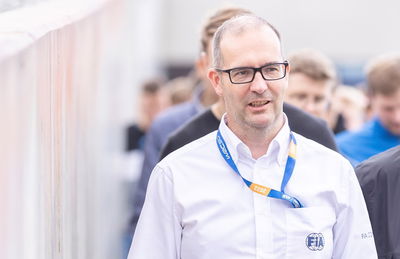FIA introducing more manufacturers to WRC a "long-term target"

Currently, Toyota under the Toyota Gazoo Racing moniker, Hyundai with its Motorsport GmbH division, and Ford in conjunction with lead partner M-Sport compete for honours in the top division of stage rallying.
At one point, there were as many as seven marques in the series, including Citroen Racing which pulled out as recently as 2019, cutting short a two-year commitment with its C3 World Rally Car.
For this year, the World Rally Championship adopted a fresh set of rules that aimed to align it more closely with plug-in hybrid technology currently deployed in passenger vehicles. A new, 100% sustainable fuel was also developed for the latest Rally1 cars following a tender process that was won by P1 Fuels.
Where exactly Andrew Wheatley and his team are with their efforts lure more marques to the competition is going to be made known at the December meeting of the FIA’s World Motorsport Council Meeting.
“The key for me is to have three to five manufacturers at each level of the pyramid – that’s our long-term target,” said Wheatley, who was appointed to the role back in March following the departure of Yves Matton. “The question if more manufacturers will join is linked to the future of the World Rally Championship, which is something we’ll present to the final World Motor Sport Council meeting of the year.
“We are going to be bringing the results of our meetings with key stakeholders and our discussions with the manufacturers with a view to what is our proposed path for the World Rally Championship over the coming years when we understand what the next generation of competition cars and road cars is going to be.”
Only next weekend’s Rally Japan remains to be tackled by World Rally teams, and although the drivers’ title was decided with two rounds to spare in favour of Kalle Rovanpera, and Toyota clinching the manufacturers’ crown on Rally Spain at the end of October, Wheatley believes the Rally1 regulations have delivered increased competition.
“It has hit the targets that we set back in 2019 when we started working on this opportunity,” he explained. “The intention was to create a clear pyramid and what we have now is the pinnacle of the sport at the top of the pyramid with close competition on each round of the championship – not just close competition between the crews, but between the manufacturers as well.
“Among the three different types of car – B-Class, C-Class and Compact Crossover – all three manufacturers have been competitive, leading rallies, winning rallies, even sharing the exact same time on certain stages.
“This sends out a very strong signal and we’re also seeing really close competition at Rally2 level. I am equally very pleased to see Rally3 achieve its targets of demonstrating the raw pace of the next generation in 2023, despite being very new.”









